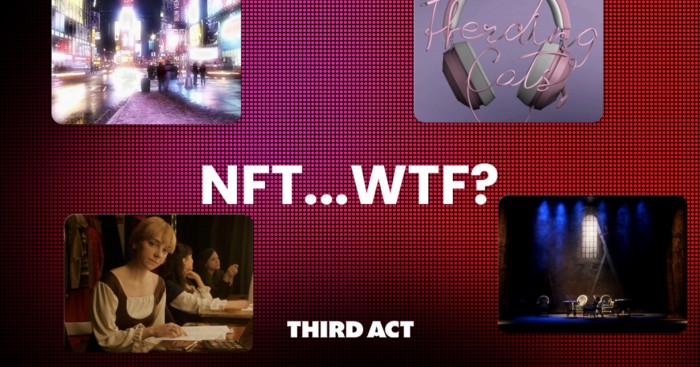The popularity of NFTs is skyrocketing. The craze, which has taken the art and tech worlds by storm, is currently making inroads into other industries, could be a little confusing. If you’ve ever wondered why a doge meme is selling for $4 million or why artists like Beeple are finding massive success with the new format, don’t worry, we have you covered.
NFTs, or non-fungible tokens, are digital artefacts bought and sold online. In most cases, they use the same technology used in cryptocurrency. Cryptocurrency is its own sort of confusing, but you don’t need to know a ton about crypto to know what an NFT is. All you need to know is that the technology involved in cryptocurrencies like Bitcoin, Ethereum, and Ripple, among others, is also used to authenticate the originality of NFTs.
Think about it like this. You try to make a perfect copy of Elphaba’s hat worn by Idina Menzel in the original production of Wicked. You spend hours stitching your own version of it, getting it exactly right, and perhaps, to the untrained eye, you’ll succeed. But there will still be aspects of the original prop that are impossible to copy. Things like the color fading due to time or a strand of Idina’s hair left in the hat. Those are aspects that are unique to the original, and it is these original qualities that, regardless of how many perfect replicas exist, make Elphaba’s original hat a one-of-one.
Think of the technology used to encode an NFT as that aforementioned lock of Idina’s hair. The encoding technology allows the owner, and potential buyers and collectors, to validate a piece as being a true original. So, for example, you can have a version of the Charlie Bit My Finger video saved on your computer, but because it doesn’t have the piece of code that the NFT version has, you, unfortunately, will not be able to sell it for hundreds of thousands of dollars.
While NFTs take advantage of similar technology to cryptocurrencies, they are not the same thing. This is where that funny word fungible comes into play. This isn’t a high school essay, so no need to pull out the phrase, “Webster’s dictionary defines fungible as…” Just know that fungible means that an item is able to replace or be replaced by another, identical item, and non-fungible means the opposite.
Fungibility, or in this case non-fungibility, is, aside from being a fun word to say, the difference between an NFT and a cryptocurrency. Cryptocurrencies can be traded, which you may have already known because that one guy from your high school posts about it all the time. They’re also always worth the same. One Bitcoin will always be worth one Bitcoin, just like one penny will always be worth one penny, and one gold ring will always be worth one gold ring, especially if you’re a very fast blue hedgehog. NFTs, on the other hand, are unique originals. They cannot be replaced, and that’s because of that code touched upon earlier.
Now that all that tech talk is out of the way, you’re probably asking yourself the question that has plagued all of humanity since the dawn of consciousness, “What’s the point?” Thankfully, when it comes to NFTs, unlike in philosophy, there’s a concrete answer.
NFTs are basically collector’s items. For instance, instead of purchasing a Lebron James card, you can buy a highlight of his on NBA Topshot. Or instead of buying a tee-shirt at the merch booth, you could purchase a one-of-a-kind image based on a Broadway show. Basically, NFTs are unique items that, instead of existing in a glass case in your basement, live in the digital space. The best part is, buying NFTs from the Third Act marketplace not only gives you the opportunity to own one-of-a-kind pieces of theatre history, but it also helps to support shows. 10% of all revenue derived from transactions on the Third Act marketplace goes directly to the shows, which keep productions producing.
Third Act is is leading the way when it comes to NFTs in the theatre industry. We partner with shows and production companies to develop awesome NFTs that can be bought, sold, and most importantly collected by true theatre fans. Now that you have a basic understanding of NFTs and why you should start collecting, jump into the platform and check out some of our collectibles at third act.digital and be sure to follow us on Twitter and Instagram @_thirdact.
Discover your own piece of theatre’s future.
